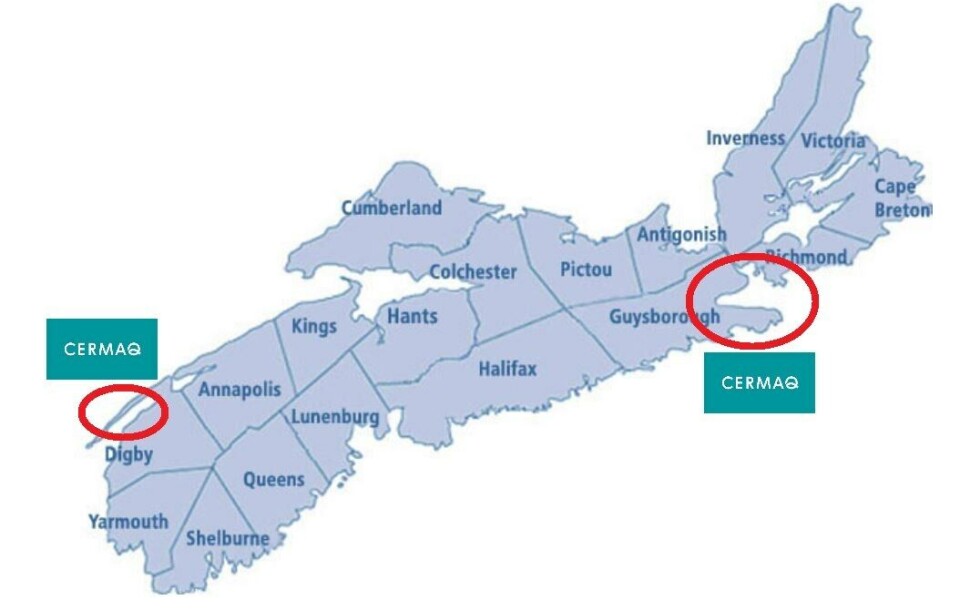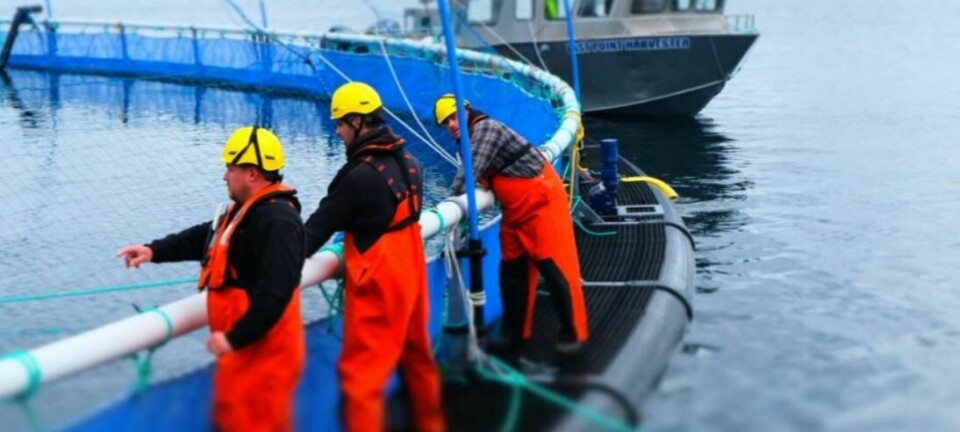
Cermaq looks to Nova Scotia to double Canada capacity
Cermaq is to begin investigating the feasibility of expanding its salmon farming operations into Nova Scotia in a move that could double the company’s capacity in Canada to around 40,000 tonnes per year.
In a statement Cermaq said the province had granted it four Options to Lease. It intends to launch site investigations and feasibility studies as well as extensive public engagement.
Its proposal – based on the premise of 20 farm licences and an annual production of 20,000 tonnes, along with two RAS hatcheries and a processing plant – would provide between 300 and 350 jobs.

Early days
The areas identified within the Options to Lease include the Chedabucto Bay region (Guysborough Country and Richmond Valley) on the eastern shoreline, and in the St Mary’s region south of Digby on the province’s south-western coast.
Cermaq Canada managing director David Kiemele said: “It’s very early days, and our intent from this venture is to explore two areas in particular, the Chedabucto Bay area and the St Mary’s Bay area, which is located in the south of the province.
“We have flagged that in order to push an investment this size along we would need to identify potential production sites that would need to deliver between 15-20,000 tonnes. We have the same model on the west coast, so we know what it takes to have sustainable production so you’re feeding the market year-round.”
Kiemele stressed Cermaq’s intention to keep the public, including the Mi’kmaq First Nation, whose territory includes all of Nova Scotia, fully informed throughout the process.
Public trust
“This is going to be a journey that we take with the people of Nova Scotia, along with the Mi’kmaq First Nation of Nova Scotia, along with the government of Nova Scotia,” he said.
“We need to understand where value is shared, and we need to ensure that we do it with them and therefore the end result helps build public trust and we can both benefit from the rewards that an industry like this might deliver by coming to Nova Scotia.”
The project is Cermaq’s first foray into Atlantic Canada. All of its Canadian production takes place in British Columbia.
Asked if Cermaq had further ambitions for Atlantic Canada beyond Nova Scotia, Kiemele said: “For the moment we’re focused on Nova Scotia. We see this, all things being equal, as a four- to five-year process before and if we get to the point where can start growing fish. So, before we think about other areas, we’ve got a lot of work to do to start here in the province.
“It truly is a greenfield site for us. It’s not like we’re acquiring volume or we have existing infrastructure or foundations here. We’re basically starting from scratch.”
Building the dialogue
He said Cermaq has begun exploratory talks with the Mi’kmaq Nation. “We are sharing information, we are building the dialogue, and we’ll continue to do so as things develop over the next six to 12 months here to ensure that we’re informing them. It’s about being as transparent as possible about the process that’s under way and looking for partnerships along the way as we go.”
Cermaq will begin establishing an information office in the Guysborough region, and hiring local employees to help lead the engagement process and act as community liaisons.
“In the coming months we will be focusing on getting our office up and running and reaching out to the Mi’kmaq, fishermen, communities, associations and local government to find out how to best engage moving forward,” said Linda Sams, Cermaq Canada’s sustainable development director.
“Once the office is up and running, we encourage everyone to come and visit. We will be sharing those details through our Nova Scotia website at www.HelloNovaScotia.ca and on our social media. Alongside this work, we will be launching our formal site investigations and data collection.”
Maps of the four Options to Lease can be seen below.






















































